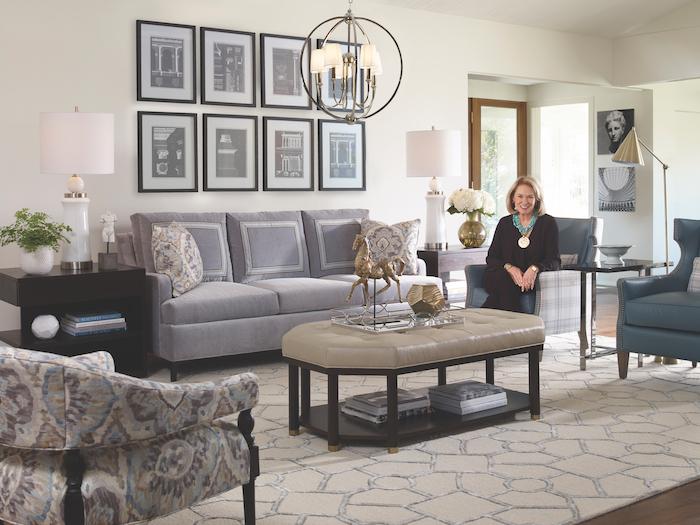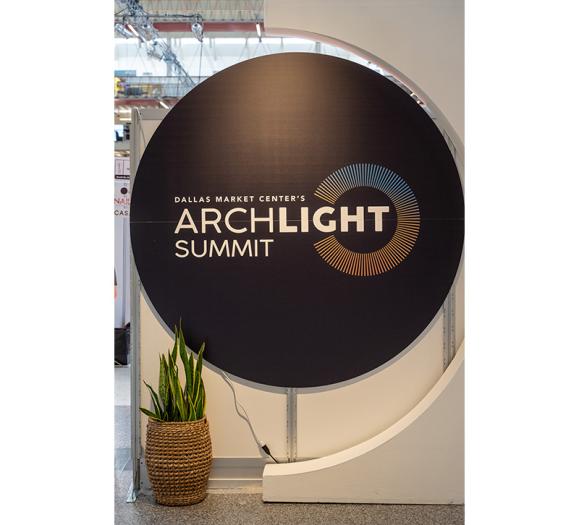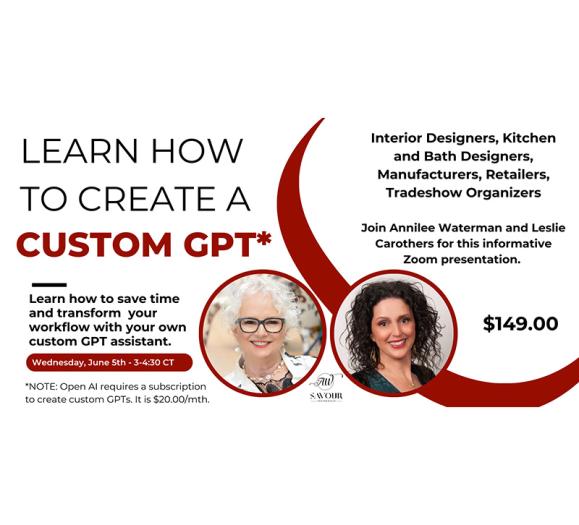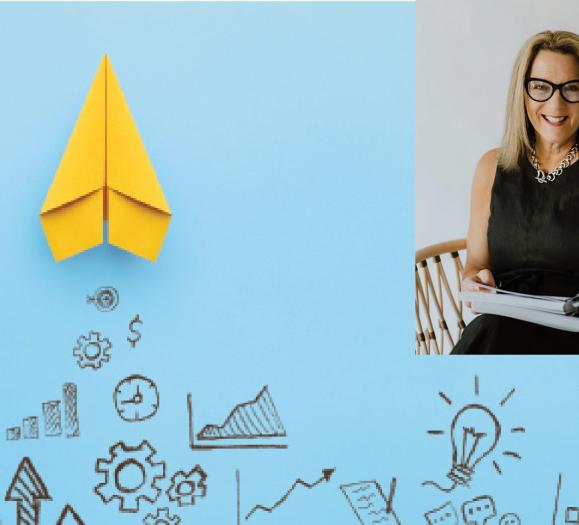For Libby Langdon, product development and licensing have been integral to her business. She has licensing deals with Fairfield Chair (furniture), Crystorama (lighting), Kas Rugs, Paragon (wall art) and she’s rolling out a new accessories line with A&B Home this spring.
While Langdon makes it look easy, there has been much to learn about product development and finding the right licensing partners for the best results. Langdon shares her insights on good product partnerships: what to watch for and how to maximize profit.
A Q&A with Libby Langdon
Furniture, Lighting & Decor: How do you assess the product design partners that are best suited to you?
Libby Langdon: One of the best places to start looking is at companies that aren’t making what you want to make. Going with someone who already offers something similar can cannibalize their product offering, and you don’t have a chance to grow.
You also want to look for a company that could use a boost. When I started with Crystorama, its focus then was crystal chandeliers, which were elegant and elaborate. My designs gave them a sleeker, more transitional style with materials such as drum or silk shades or glass. My designs were a totally different look for them, so my collection was a great addition. Their customers were buying the types of design that I was creating, but they weren’t buying them at Crystorama. Sales reps and customers were excited because I had introduced a new look. When you partner with a company and they aren’t doing something that looks the way your product looks, it can be a win-win.
FLD: How do you approach a potential licensing partner?
LL: If you have a relationship with a manufacturer, that’s a great place to start. Don’t let it deter you if you don’t have a relationship though. Many manufacturing executives are fine with dealing with you directly, so you really don’t need a licensing agent. Pick up the phone and be ready. Have your foundation, and have your game plan in line when you are pitching to a manufacturer. Be sure you understand the inner workings of the companies you are approaching. Remember, you are opening up new audiences to manufacturers. Don’t be afraid to get out there and just ask. The worst that someone can say is they’re not interested.
FLD: What are some of the key things you look for in a product licensing partnership?
LL: For me what was really important was that I partnered with companies that would sell to e-commerce as well as in retail stores. I don’t want to create collections that are to-the-design-trade only. Having my products at retail has been a good choice financially. I wanted to know that someone could be in their PJs at 2 a.m. and be able to buy a chandelier. Ensuring retail availability means my products are readily available. There are more people who can buy a product vs. the number of people who can hire an interior designer. Consumers can go online and buy a sofa or a piece of artwork, and that opens me up to a whole new audience. When people ask where I’ve gotten something, I love to be able to refer to a website or a retail store. Being able to have more outlets has resulted in more money.
FLD: What is a top priority when connecting with a manufacturing partner?
LL: Price point is one of the most important things I look for. I know my lane, and I know my audience. I have partnered with companies where the product was so expensive I wouldn’t have purchased it for my clients. You need to know your audience, your lane and your voice, where you can promote your collections. A bad fit for me is something that’s crazy expensive or too inexpensive. I did a partnership with Walmart years ago, for example, and that was a bad fit.
FLD: What is your primary motivation for creating home furnishings collections? How has this branch of your business affected your interior design business?
LL: While my product collections have raised awareness of my brand because the product is out there in the marketplace, I’m up front with my partners that I’m doing this because I want to make money. People will say don’t get into licensing for the money. However, getting into it as a vanity project doesn’t work. Product licensing hasn’t impacted my interior design business. I am careful with clients because I want them to feel like they are the primary focus of my work. I work harder with my clients so they don’t think I’m not paying attention to them. I want to keep everyone feeling good.
FLD: How involved are you in the product development process?
LL: People used to think of licensing as where a company puts your name on a product collection they’ve created. That doesn’t work anymore. You have to come with an arsenal of design sketches and make sure the collection has a focused point of view. I feel a responsibility to my partners to design things that are going to be sellable. I literally start with bad sketches. We do CAD in my office for the lighting, rugs and wall decor; for Fairfield (furniture), they take my sketches and measurements and do the CAD.
Sometimes people don’t know how much of the designing I do. I literally sit and sketch, and with a tape measure, we determine how high the arms should be, how deep the seats are, what type of bulb will go into that light fixture, and how something can be flat packed in a box.
You can’t just walk in and say, “I like the look of this chair.” You have to arm your manufacturing partners with every detail. I don’t just show up at Fairfield and breeze through and pick fabrics. Everything I design has my fingerprints all over it.
FLD: How many designs do you bring to your manufacturer partner and why?
LL: I come with a big arsenal of product designs. When I first met with Fairfield, I came with about 200 SKUs. Then we determine how much they want to bite off. When I started with Fairfield, we introduced 40 SKUs to begin with. That’s a lot. Always bring more than you know you’re going to do. Product development is an enormous investment for a manufacturer.
FLD: How has your experience as an interior designer informed your product development and your partnerships?
LL: Well, I don’t sell hot pink tete-`a-tete sofas. I sell gray and tan and cream sofas. I’m a designer, and I’m on the front line with consumers all day, every day. I have insight into the end user. For me, that one-on-one time with the consumer fuels the design of my products. There are reasons I have a sofa arm at this height or a shade on a lantern. Everything has a reason. I think it’s important for me to back that up when I’m talking to product development and to the sales reps. My product sells because the design is good and it resonates with the buyer.
FLD: How important is it for you to market your products? How does your marketing differ from that of your manufacturing partner?
LL: You have to get out there and sell it. The marketing and promotion of a product collection is as important as the design. The worst thing you can do is say “I designed the product; I hope it sells.” The value for a manufacturer in working with a designer is he/she will go out and reach their audience and bring a new audience to that company. You have to tell the story about why you designed this recliner or light this way. You have to be able to speak to trends.
I do a whole pitch to the sales reps before market opens. I walk retailers through and explain my perspective. It’s important to create marketing materials: social media, videos, things your manufacturer and retail stores can use to help sell. Create content, tell the story about the product, photograph the product. You have to keep the momentum going, and it can’t be just around the market. The marketing is ongoing and it never ends. That’s a huge part of having a collection.
When you’re looking for a manufacturer to partner with, you want to look at their marketing platforms as well. Make sure the manufacturer is going to match whatever marketing efforts you’re putting in. When I launched Fairfield, I had done a ton of videos, walk-throughs in the showroom with retailers, etc. They were able to use some of the materials I’ve created. After seeing what we put together, Fairfield put a whole gallery in the Rhode Island Design Center. They’ve taken out full page ads and billboards in Rhode Island. The sales reps are fantastic, and I worked with them to curate the collection. This is a great example of marketing promotion and eventual success on a store floor.
FLD: What are some of the red flags you watch for when choosing a manufacturer partner?
LL: One thing is if a manufacturer wants to do a short-term deal. You need some time for the collection to establish itself. Ideally, you want to start with three years. Be sure to hire an attorney who understands licensing. There are so many little pitfalls. You don’t want your royalty amount diminished because of loopholes in a contract, such as shipping or returns or selling samples below net. Keep in mind that royalty rates differ depending on the product. The rate might be higher for accessories and rugs and lower for furniture, for example. There’s a pretty big swing in rates — anywhere from three to eight percent. You don’t want to partner with a company that is sheepish about royalties. Another red flag would be if the manufacturer is worried about using your name. Sometimes they worry if they use the name, people will think it’s more expensive. Back up why it’s important and why you’re partnering with them.
Ensure that a company you’re partnering with has a good marketing platform. You want to know that your manufacturing partner will be marketing right there beside you. Also, inquire about sales reps. There are different ways to get messaging out there. Do they sell to designers? Designers have such a presence now, that it’s a great platform to have them sourcing and putting your products in front of their clients. Your manufacturer should be designer friendly. That will help you open up a whole new sales stream.







